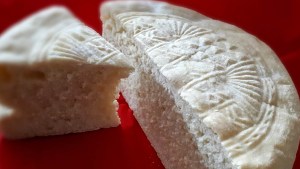The Easter season is meant to be a great time of joy. This joy is naturally shared with others and over the centuries Christians have expressed it in different ways.
For example, Christians in many parts of the world will greet each other with a “Paschal Greeting.” It is much more than a “Happy Easter,” and relates the joy one has on account of the resurrection of Jesus.
The custom was originally developed within the context of the liturgy and is still maintained by Eastern Christians today.
It occurs during the Resurrection Matins, a night-time vigil that begins the celebration of Easter on Holy Saturday. According to the Metropolitan Cantor Institute, during the signing of the psalms “the faithful come forward to kiss the hand cross held by the priest, who greets each one: ‘Christ is risen!’; and each of the faithful replies, ‘Indeed he is risen!'”
The phrase is based on a greeting found in the Gospel of Luke, when those who encountered Jesus on the road to Emmaus went to tell the eleven apostles, “The Lord has risen indeed, and has appeared to Simon!” (Luke 24:34)
There is also a tradition that says Mary Magdalene boldly approached Emperor Tiberius in Rome in order to relate to him the resurrection of Jesus. She said to him, “Christ is risen!”
Ever since the Paschal Greeting has been preserved not only in the liturgy, but also in the everyday customs of Eastern Christians who greet their friends and relatives throughout the Easter season with a joyous “Christ is risen!”
The Paschal Greeting
“Christ is risen! He is risen, indeed!”
Christus resurrexit! Resurrexit vere! (Latin)
Christòs anésti! Alithós anésti! (Greek)

Read more:
Why do Eastern Christians use leavened bread for the Eucharist?

Read more:
What does it mean to be “Roman” Catholic?

